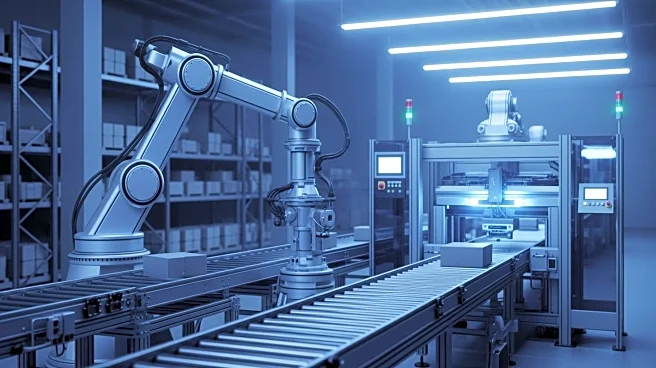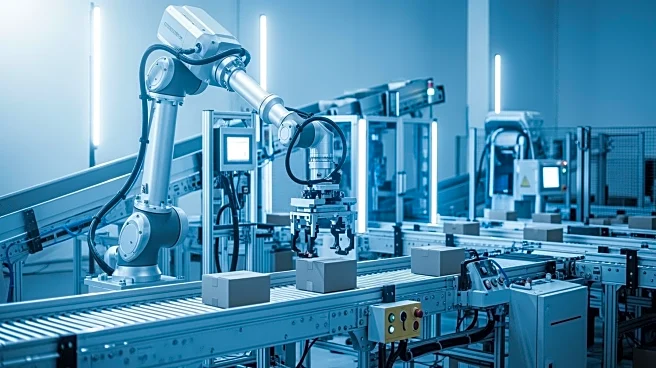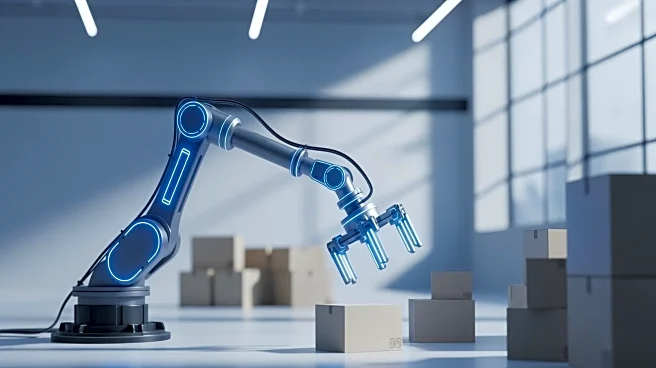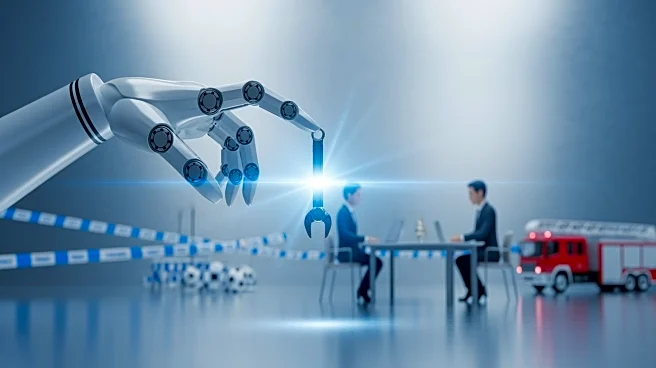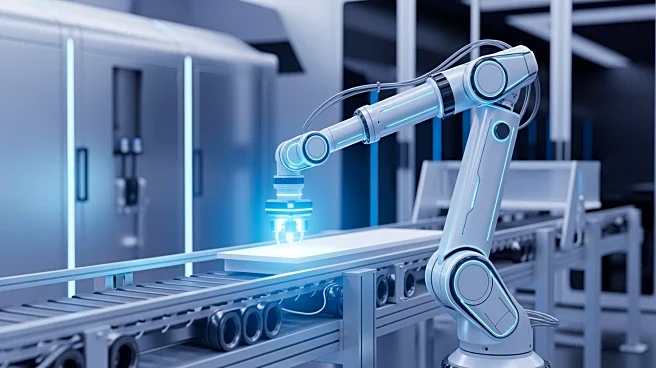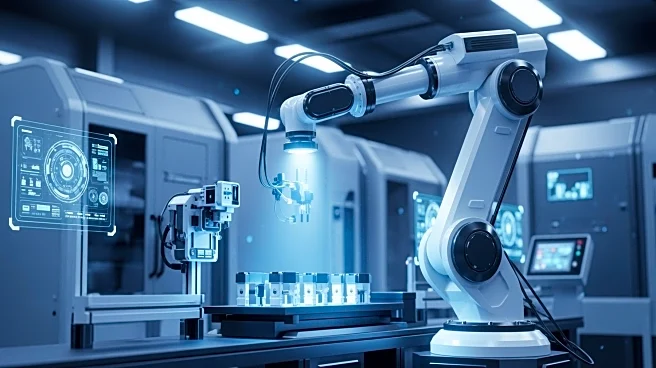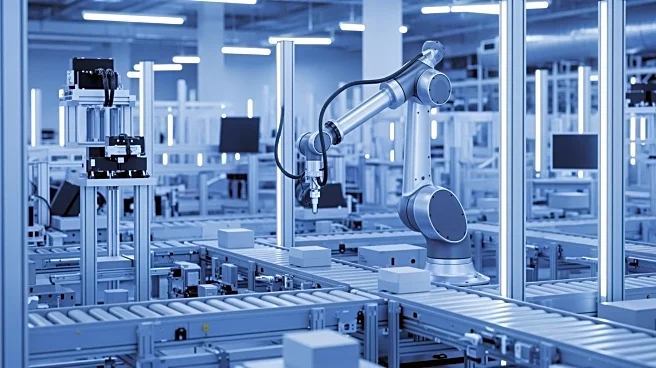What's Happening?
Amazon is planning a significant shift towards automation in its warehouse operations, which could result in substantial cost savings. According to Morgan Stanley, the e-commerce giant aims to replace
600,000 human jobs with robots over the coming years, with a goal of automating 75% of its operations. This transition includes the addition of approximately 40 next-generation robotics warehouses by the end of 2027. The move is expected to save Amazon between $2 billion and $4 billion annually by 2027. The company has already begun updating its existing fulfillment centers to accommodate this shift. Amazon's CEO, Andy Jassy, has highlighted the cost efficiencies and improved delivery times resulting from the use of over 1 million robots across its facilities. The introduction of a new robotic system, 'Blue Jay,' capable of performing multiple tasks, marks a significant step in this direction.
Why It's Important?
The transition to robotics in Amazon's warehouses represents a major shift in the labor market, potentially displacing thousands of full-time human jobs. This move could have significant implications for the U.S. workforce, particularly in regions heavily reliant on warehouse employment. While the cost savings for Amazon are substantial, the broader economic impact includes potential job losses and the need for workforce retraining. The automation strategy also underscores the growing trend of technology-driven efficiencies in the retail sector, which could influence other companies to adopt similar measures. For Amazon, the savings could enhance its competitive edge, allowing for reinvestment in other areas such as cloud computing and online advertising, which are critical to its growth strategy.
What's Next?
As Amazon continues to implement its automation strategy, the company may face scrutiny from labor groups and policymakers concerned about job displacement. The potential for larger-than-expected savings could prompt further investment in robotics, accelerating the pace of automation. Stakeholders, including industry experts and analysts, will likely monitor Amazon's progress closely to assess the broader implications for the retail and logistics sectors. Additionally, Amazon's ability to balance cost savings with social responsibility will be a key area of focus as it navigates this transition.
Beyond the Headlines
The ethical considerations of replacing human workers with robots are significant, raising questions about the future of work and the role of technology in society. The shift towards automation may necessitate new policies and frameworks to support displaced workers, including retraining programs and social safety nets. Furthermore, the long-term cultural impact of such a transformation could influence public perception of technology and its role in everyday life.
